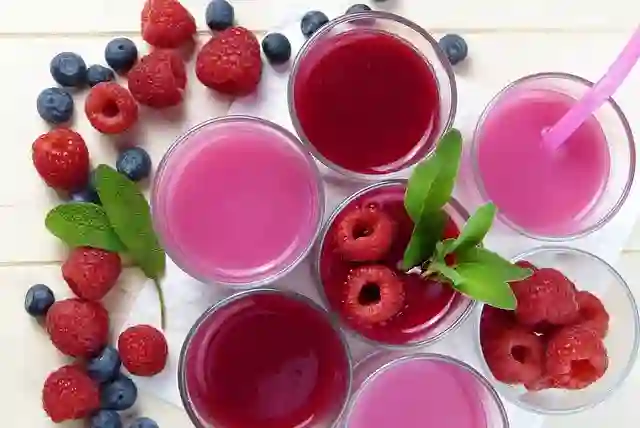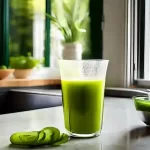Juice Diet Plans: A Beginner’s Guide
Juice diet plans have gained popularity in recent years as a way to detox, cleanse, and lose weight. By consuming only juices made from fruits and vegetables, proponents of juice diets claim to experience improved digestion, increased energy, and weight loss. However, it’s important to note that juice diets should not be used as a long-term solution and should only be done under the supervision of a healthcare professional.
What is a Juice Cleanse?
A juice cleanse is a type of juice diet where a person consumes only juices for a specified period, usually ranging from 3 to 7 days. The idea behind a juice cleanse is to allow the body to rest and recover from the constant processing of solid food. By consuming only juice, the body is able to easily digest and absorb the nutrients, leading to improved health and weight loss.
Juice Detox and Fasting
A juice detox is similar to a juice cleanse, but with a focus on removing toxins from the body. By consuming only juice, the body is able to focus on eliminating waste and toxic build-up, leading to improved health and weight loss. Juice fasting, on the other hand, is a type of juice diet where a person consumes only juice for a specified period of time, usually ranging from 1 to 3 days.
Juicing for Weight Loss
Juicing for weight loss has become a popular trend due to its claimed ability to help people lose weight quickly. By consuming only juice, a person is able to limit their calorie intake, leading to weight loss. However, it’s important to note that a juice diet should not be used as a long-term solution for weight loss and should only be done under the supervision of a healthcare professional.
Green Juice Diet
A green juice diet is a type of juice diet where a person consumes only green juices made from leafy greens, such as spinach, kale, and lettuce. Green juices are high in nutrients and low in calories, making them a great option for weight loss and improved health.
Juice Recipes
Juice recipes are a great way to add more fruits and vegetables to your diet and to enjoy the health benefits that come with juicing. There are countless juice recipes to choose from, making it easy to find a juice that you love. Here are some popular juice recipes to try:
- Green Juice Recipe:
• 2 handfuls of spinach
• 1 cucumber
• 1 green apple
• 1 lemon
• 1 inch of ginger - Fruit Juice Recipe:
• 2 peaches
• 2 plums
• 2 cups of strawberries
• 1 banana
• 1 cup of coconut water - Vegetable Juice Recipe:
• 4 carrots
• 2 celery stalks
• 1 beetroot
• 1 cucumber
• 1 lemon
When making your own juice, it’s important to use fresh ingredients and to avoid adding sugar or other unhealthy ingredients. You can also experiment with different combinations of fruits and vegetables to find a juice that you love.
It’s important to note that while juice is a great way to add more nutrients to your diet, it should not be used as a replacement for solid food. Juice should be consumed in addition to a well-balanced diet that includes a variety of fruits, vegetables, and other healthy foods.
Healthy Juice Diet
A healthy juice diet is one that is well-balanced and includes a variety of fruits and vegetables. When following a juice diet, it’s important to consume a variety of different juices to ensure that you’re getting all of the nutrients your body needs.
3 Day Juice Cleanse
A 3 day juice cleanse is a popular option for those who are new to juice diets. By limiting the cleanse to just 3 days, it’s easier to stick to the diet and to see results.
Juice Diet for Weight Loss
A juice diet for weight loss is a type of juice diet where a person consumes only juice in an effort to lose weight. By limiting calorie intake and consuming only juice, a person is able to lose weight quickly. However, it’s important to note that a juice diet should not be used as a long-term solution for weight loss and should only be done under the supervision of a healthcare professional.
Vegetable Juice Diet
A vegetable juice diet is a type of juice diet where a person consumes only vegetable juices. Vegetable juices are high in nutrients and low in calories, making them a great option for weight loss and improved health.
Juice Diet Recipes
There are countless juice diet recipes to choose from, making it easy to find a juice that you love. Some popular juice diet recipes include green juices, fruit juices, and vegetable juices. When following a juice diet, it’s important to consume a variety of different juices to ensure that you’re getting all of the nutrients your body needs.
Juice Diet Plan for Beginners
If you’re new to juice diets, it’s important to start slowly and to choose a juice diet plan that is right for you. A juice diet plan for beginners should include a variety of different juices and should be limited to just a few days at first. It’s also important to speak with a healthcare professional before starting a juice diet to ensure that it’s safe for you.
Fruit Juice Diet
A fruit juice diet is a type of juice diet where a person consumes only fruit juices. Fruit juices are high in sugar, so it’s important to limit your intake and to choose healthy options, such as green juices, that are low in sugar and high in nutrients.
Juice Diet Plan Menu
A juice diet plan menu should include a variety of different juices, including green juices, fruit juices, and vegetable juices. It’s important to choose a variety of different juices to ensure that you’re getting all of the nutrients your body needs.
Juice Diet Plan for Detox
A juice diet plan for detox is a type of juice diet that is focused on removing toxins from the body. By consuming only juice, the body is able to focus on eliminating waste and toxic build-up, leading to improved health and weight loss.
Juice Diet Benefits
Juice diets offer a variety of benefits, including improved digestion, increased energy, and weight loss. By consuming only juice, the body is able to easily digest and absorb the nutrients, leading to improved health and weight loss.
Juice Diet Plan Delivery
Juice diet plan delivery is a convenient option for those who want to follow a juice diet but don’t have the time or resources to make their own juice. With juice diet plan delivery, you can have healthy, nutritious juices delivered right to your door, making it easy to stick to your diet and see results.
Juice Diet Plan for 3 Days
A juice diet plan for 3 days is a popular option for those who are new to juice diets or who want to try a juice diet for a short period of time. A juice diet plan for 3 days typically involves consuming only juice for breakfast, lunch, and dinner, with water and herbal tea allowed in between. Here’s an example of a 3-day juice diet plan:
- Day 1:
- Breakfast: Green juice made with spinach, kale, cucumber, green apple, and lemon
- Lunch: Vegetable juice made with carrots, celery, beetroot, cucumber, and lemon
- Dinner: Fruit juice made with peaches, plums, strawberries, banana, and coconut water
- Day 2:
- Breakfast: Fruit juice made with peaches, plums, strawberries, banana, and coconut water
- Lunch: Green juice made with spinach, kale, cucumber, green apple, and lemon
- Dinner: Vegetable juice made with carrots, celery, beetroot, cucumber, and lemon
- Day 3:
- Breakfast: Vegetable juice made with carrots, celery, beetroot, cucumber, and lemon
- Lunch: Fruit juice made with peaches, plums, strawberries, banana, and coconut water
- Dinner: Green juice made with spinach, kale, cucumber, green apple, and lemon
It’s important to remember that a juice diet should only be done under the supervision of a healthcare professional and should not be used as a long-term solution. After the 3-day juice diet, it’s important to gradually incorporate solid foods back into your diet to avoid discomfort and to ensure that you’re getting all of the nutrients your body needs.
Juice Diet Plan for 7 Days
A juice diet plan for 7 days is a more intense option for those who are experienced with juice diets or who want to see more significant results. A juice diet plan for 7 days typically involves consuming only juice for breakfast, lunch, and dinner, with water and herbal tea allowed in between. Here’s an example of a 7-day juice diet plan:
- Day 1-3:
- Breakfast: Green juice made with spinach, kale, cucumber, green apple, and lemon
- Lunch: Vegetable juice made with carrots, celery, beetroot, cucumber, and lemon
- Dinner: Fruit juice made with peaches, plums, strawberries, banana, and coconut water
- Day 4-6:
- Breakfast: Vegetable juice made with carrots, celery, beetroot, cucumber, and lemon
- Lunch: Green juice made with spinach, kale, cucumber, green apple, and lemon
- Dinner: Fruit juice made with peaches, plums, strawberries, banana, and coconut water
- Day 7:
- Breakfast: Fruit juice made with peaches, plums, strawberries, banana, and coconut water
- Lunch: Vegetable juice made with carrots, celery, beetroot, cucumber, and lemon
- Dinner: Green juice made with spinach, kale, cucumber, green apple, and lemon
It’s important to remember that a juice diet should only be done under the supervision of a healthcare professional and should not be used as a long-term solution. After the 7-day juice diet, it’s important to gradually incorporate solid foods back into your diet to avoid discomfort and to ensure that you’re getting all of the nutrients your body needs.
Additionally, it’s important to stay hydrated and to listen to your body throughout the juice diet. If you experience any discomfort or symptoms, it’s important to speak with a healthcare professional to ensure that the juice diet is safe for you.
Conclusion
Juice diets are a popular trend that offer a variety of benefits, including improved digestion, increased energy, and weight loss. However, it’s important to remember that juice diets should not be used as a long-term solution and should only be done under the supervision of a healthcare professional. Whether you’re new to juice diets or an experienced juicer, there’s a juice diet plan that’s right for you.







